Anti-IgG VHH Beads for Immunoprecipitation
High-performance VHH-conjugated (magnetic) agarose beads - optimized for Immunoprecipitation (IP) and Co-IP workflows.
Anti-IgG VHH Beads - A Smarter Alternative to Protein A/G
While Protein A and G remain the most common choices for antibody capture, their broad and unspecific Fc binding and potential for leaching from beads can compromise specificity and lead to interfering background in sensitive assays.
Optimized for targeted precision and clean results, our VHH-based beads redefine specificity and purity in immunoprecipitation.
-
No protein A/G contamination
-
Species-specific IgG binding
-
Consistent and clean results
Available IgG IP Beads
Anti-Rabbit / Anti-Mouse VHH Beads
Our anti-rabbit / anti-mouse VHH beads are conjugated with a mix of three high-affinity VHHs (Nanobodies) targeting rabbit IgG, mouse IgG1, and mouse kappa light chains. This combination ensures broad compatibility with the most commonly used rabbit and mouse antibodies.
Whether you're performing routine IPs across various antibody subtypes or working with antibodies of unknown isotype, these beads offer a powerful, reliable alternative to protein A or protein G, delivering clean, efficient pulldowns with consistent performance.
| Target | Formats | Available Sizes | Specificity | |
|---|---|---|---|---|
| Rabbit / Mouse | Agarose | Magnetic agarose | 1ml, 2ml, 5ml | Rabbit IgG, Mouse IgG1, 2a*, 2b*, 3* *kappa light chain |
Co-IP of whole MCM-Complex via specific anti-MCM6 antibody
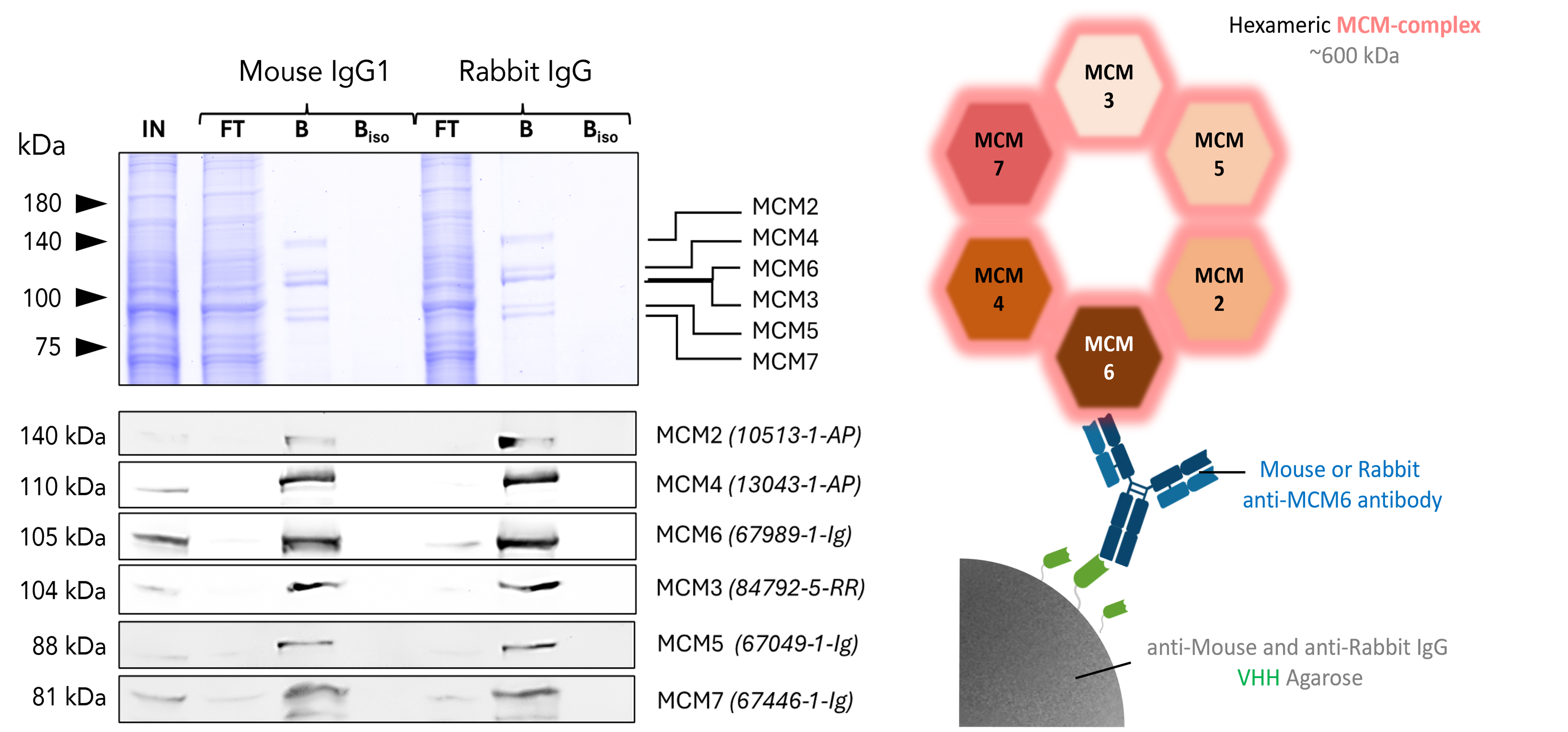
Co-IP of MCM complex via pulldown of MCM6 using anti-MCM6 antibodies and anti-rabbit IgG / anti-mouse IgG VHH agarose. All subunits of the 600 kDa heterohexameric complex are successfully pulled down using both a mouse IgG1 (67989-1-Ig) and a rabbit (13347-2-AP) MCM6 antibody, as shown by separate western blots using subunit specific antibodies. For input (IN) and flow through (FT) fractions 1% was loaded. For bound fraction (B) and bound fraction of isotype control antibody (Biso) 25% was loaded. Product codes of Proteintech antibodies are provided in parentheses. BISO is an isotype control used as negative control (ms1: 66260-1-Ig; rb: 30000-0-AP)
Species specificity of anti-rabbit IgG / anti-mouse IgG VHH agarose
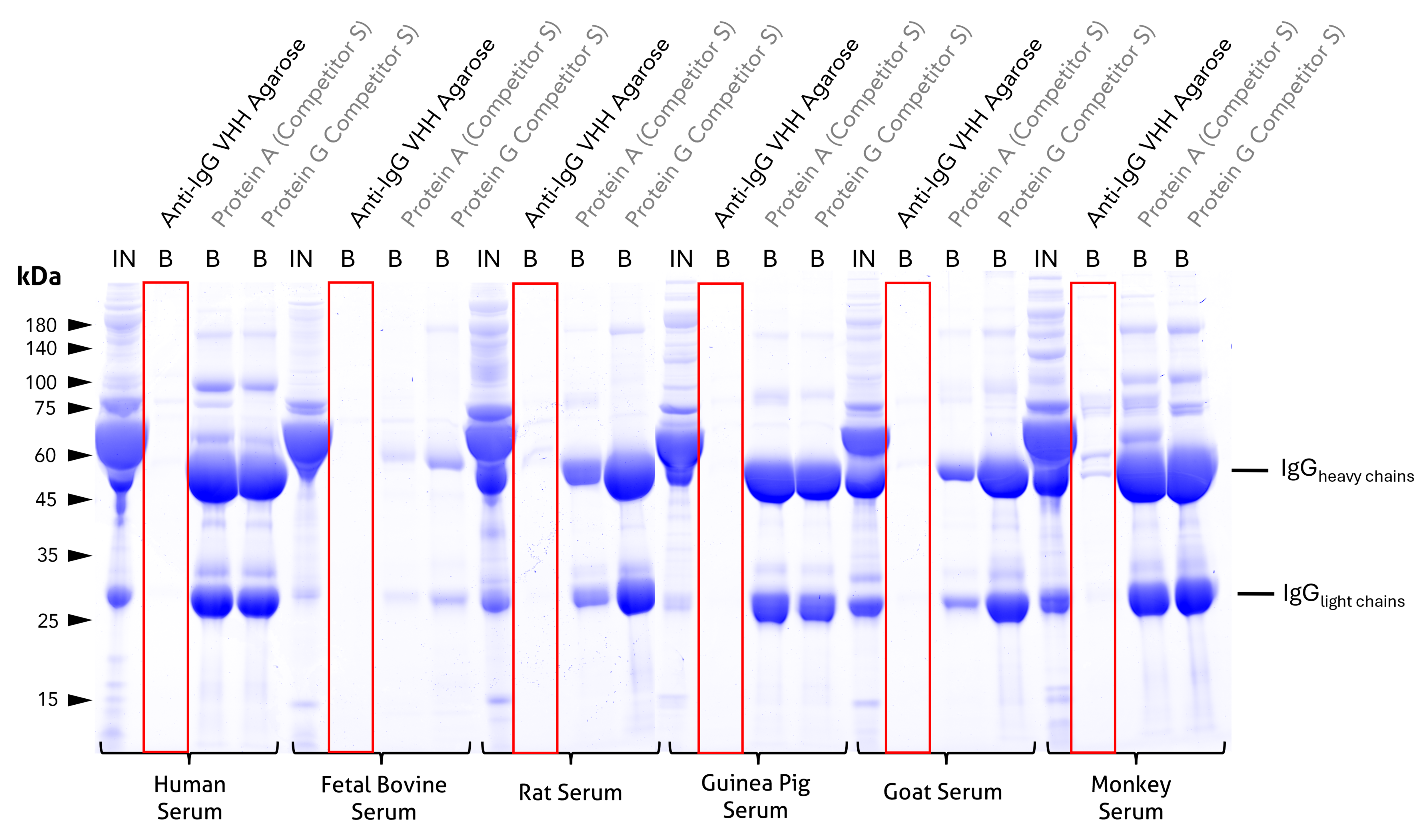
Cross reactivity test and comparison to competitor protein A and protein G beads. Coomassie stained SDS-PAGE of input (IN) and bound fractions (B) for different beads – incubated with sera of relevant model species. Unlike the tested protein A or G beads, bound fractions of Proteintech anti-rabbit IgG / anti-mouse IgG VHH agarose shows no cross-reactivity to any of the tested species, with exception of a low affinity binding of monkey IgG. For input fractions 1% was loaded, for bound fractions 25% were loaded. Anti-IgG VHH bead lanes are highlighted in red.
Clean pulldown and detection of protein of interest with Anti-IgG VHH agarose beads using anti-PCNA”
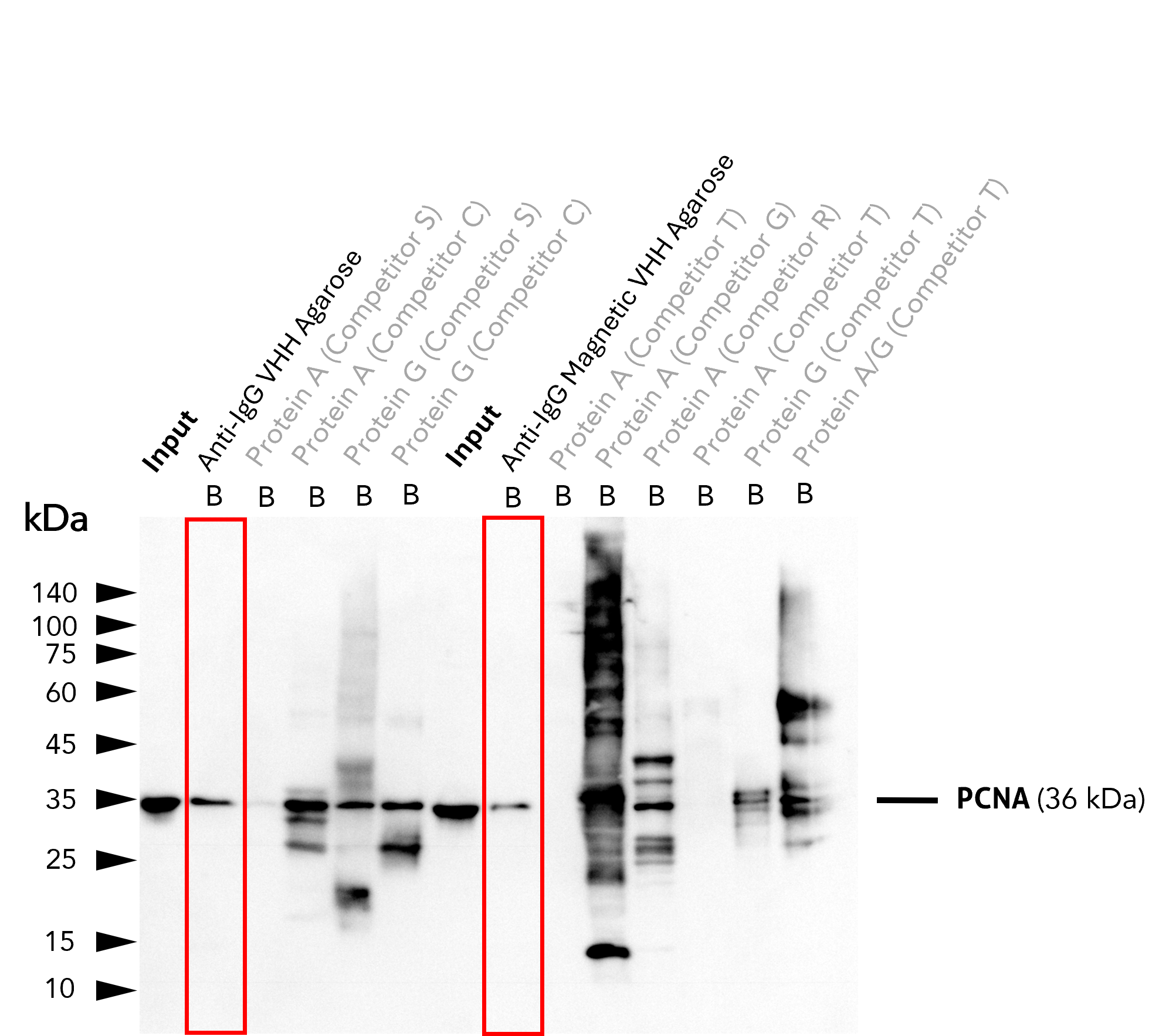
Western Blot of PCNA IP. 5 µg Proteintech PCNA Monoclonal antibody (IgG1) (60097-1-Ig) were used for pulldown of PCNA. Detection antibody: PCNA Polyclonal antibody (10205-2-AP, 1:2000) labeled with FlexAble HRP Antibody Labeling Kit for Rabbit IgG. In contrast to many competitor beads, clean pulldown of PCNA facilitates unambiguous identification of the target protein with Proteintech anti-rabbit IgG / anti-mouse IgG VHH beads (Ag. = VHH agarose; M.Ag. = Magnetic VHH agarose). Other beads show leaching of protein A or protein G into the final IP fractions, which can lead to binding of detection antibodies to the membrane and unspecific signal, as observed for several competitor beads. For input fractions 1% was loaded, for bound fractions 25% were loaded. Anti-IgG VHH bead lanes are highlighted in red.
Capacity comparison - Agarose
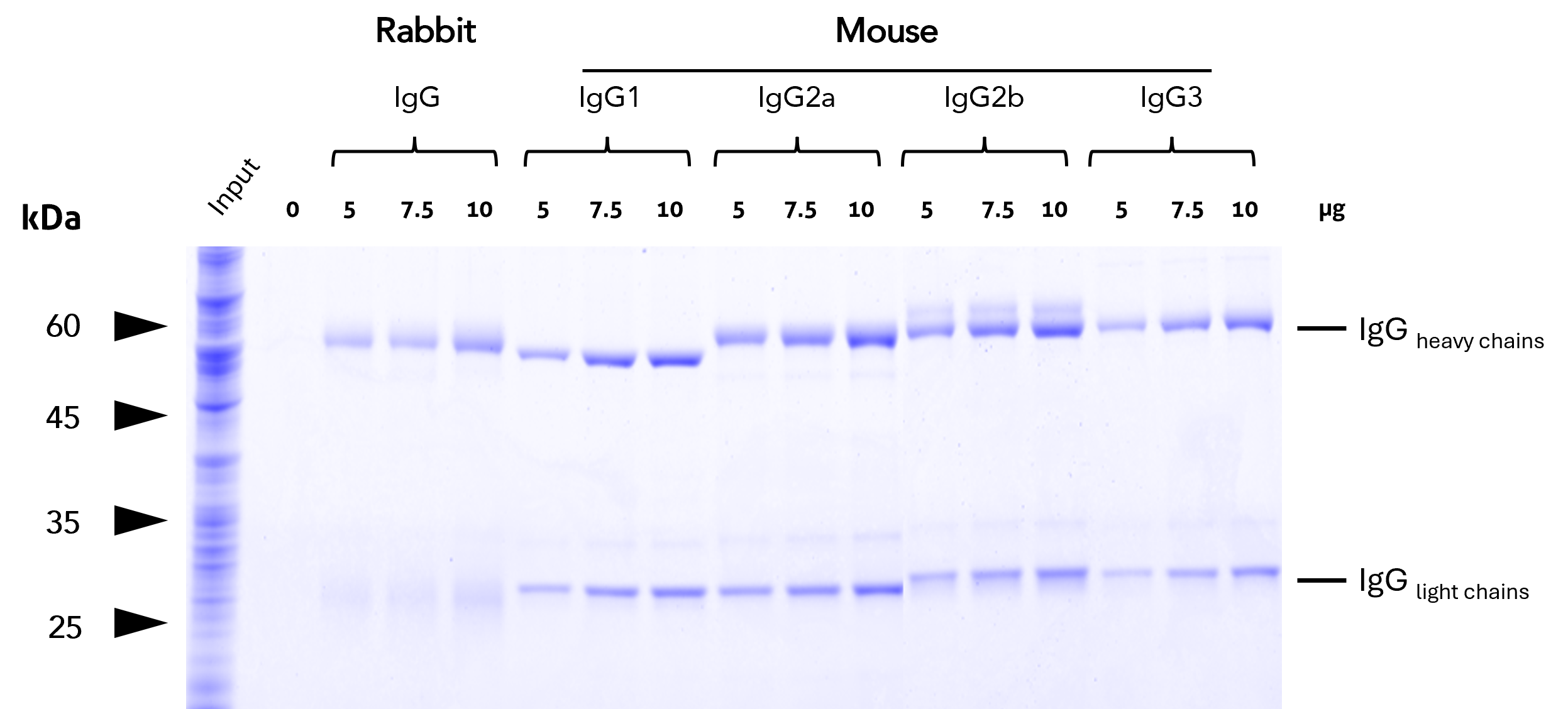
Anti-rabbit IgG / anti-mouse IgG VHH agarose binding efficiency. Binding of antibodies of different subtypes and from different vendors were tested. The high capacity of the anti-rabbit IgG / anti-mouse VHH bead allows for efficient binding of rabbit IgG and all mouse IgG subtypes.
Capacity comparison - Magnetic agarose
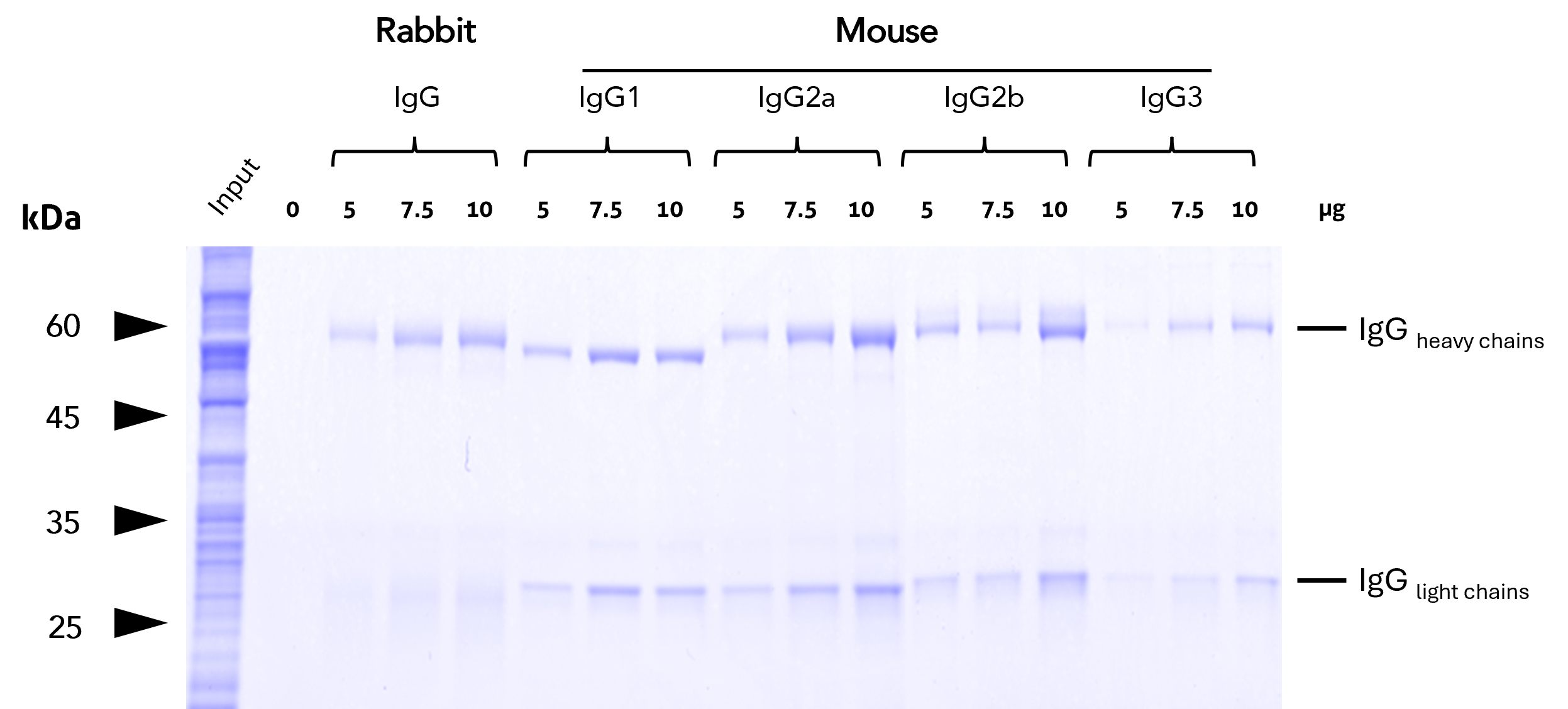
Anti-rabbit IgG / anti-mouse IgG Magnetic VHH agarose binding efficiency. Binding of antibodies of different subtypes and from different vendors were tested. The capacity of the anti-rabbit IgG / anti-mouse VHH bead is optimized for binding all rabbit IgG and all mouse IgG subtypes efficiently.
VHH agarose
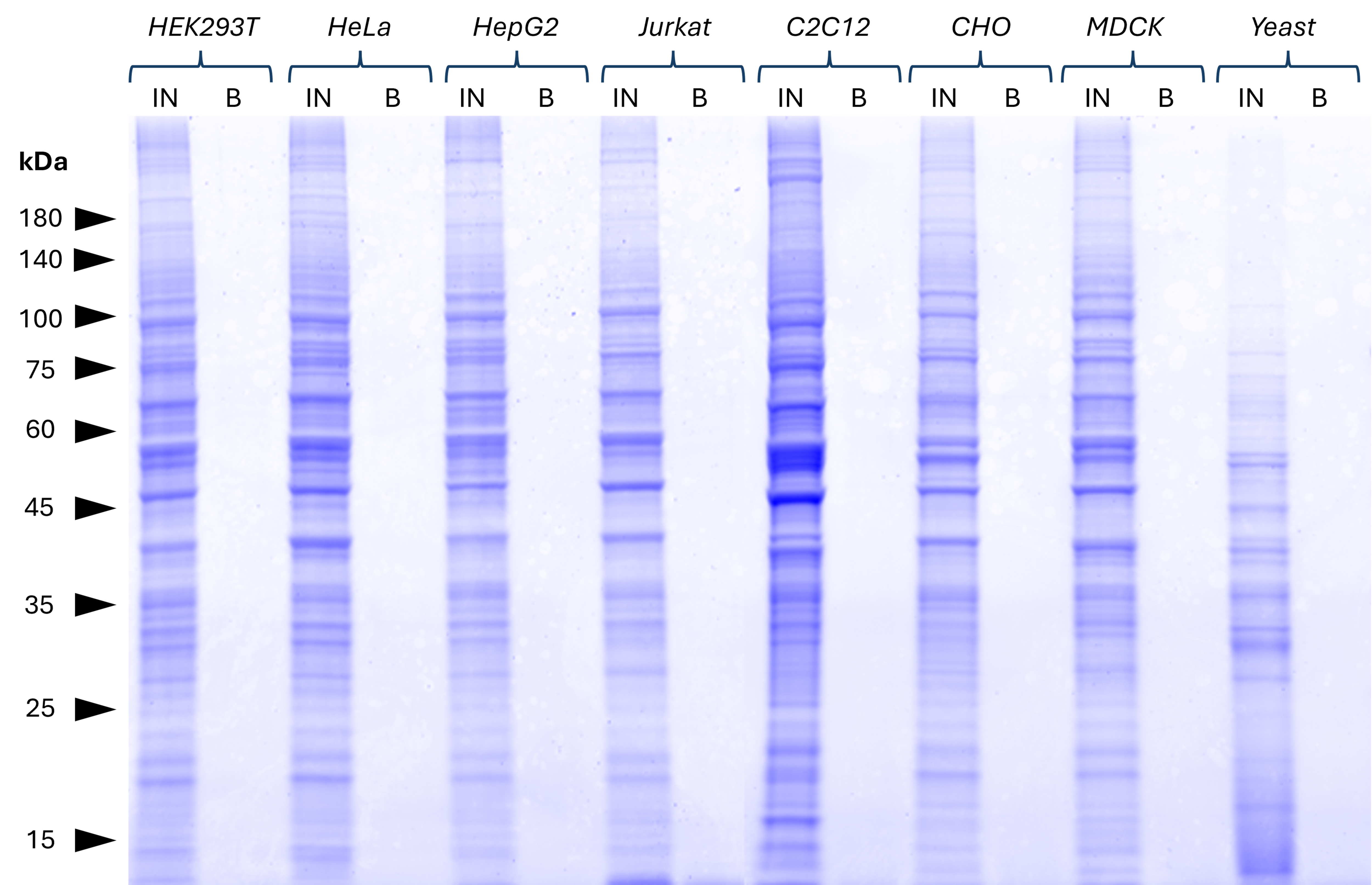
Background binding of anti-rabbit IgG / anti-mouse IgG VHH agarose. Various cell lysates (derived from 1x10^7 cells) were tested for unspecific binding to the anti-mouse / anti-rabbit VHH agarose. Clean backgrounds were observed for all lysates, indicating that no significant unspecific binding occurs. Coomassie stained SDS-PAGE. Bound (B) fractions: 25%, input (IN) fractions 1% loaded. HEK, HeLa, HepG2, Jurkat: Human; C2C12: Mouse; CHO: Hamster, MDCK: Canine; Yeast: Fungi.
Magnetic VHH agarose
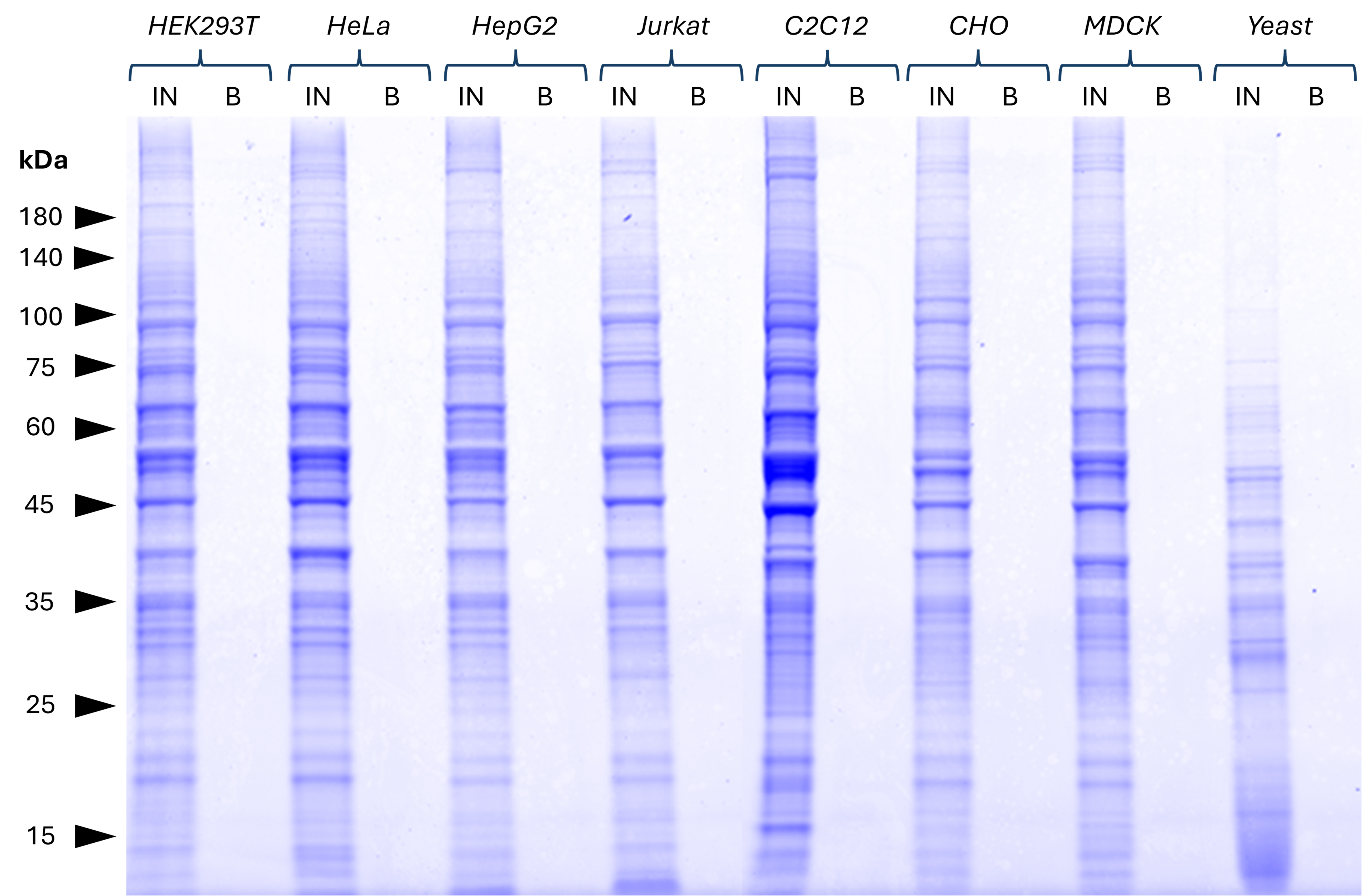
Background binding of anti-rabbit IgG / anti-mouse IgG Magnetic VHH agarose. Various cell lysates (derived from 1x10^7 cells) were tested for unspecific binding to the anti-mouse / anti-rabbit magnetic VHH agarose. Clean backgrounds were observed for all lysates, indicating that no significant unspecific binding occurs. Coomassie stained SDS-PAGE. Bound (B) fractions: 25%, input (IN) fractions 1% loaded. HEK, HeLa, HepG2, Jurkat: Human; C2C12: Mouse; CHO: Hamster, MDCK: Canine; Yeast: Fungi.
High Affinity & Unmatched Specificity - For Cleaner, More Reliable Results
Achieve superior performance in your immunoprecipitation (IP) experiments with our ready to use anti-IgG VHH beads. Engineered for outstanding affinity and exceptional species specificity, our rabbit/mouse-specific beads combine three precisely selected VHHs that target only rabbit and mouse IgG - and nothing else.
-
Minimal background signal
-
No cross-reactivity with bovine, macaque, rat, or guinea pig IgG
-
Reliable, reproducible, and clean results